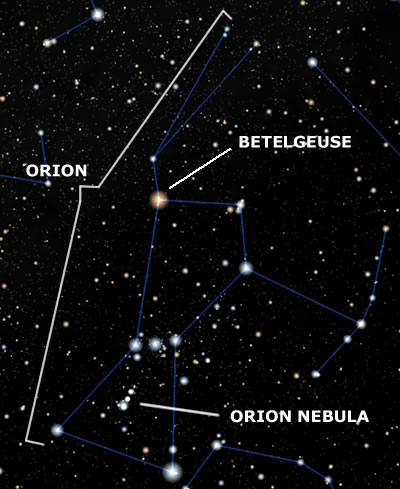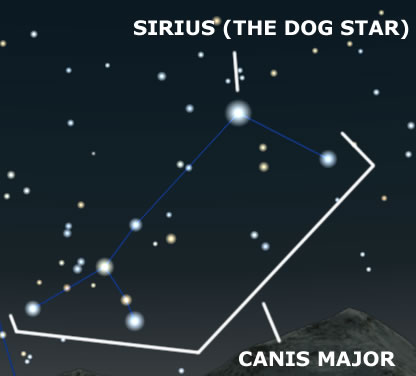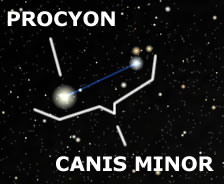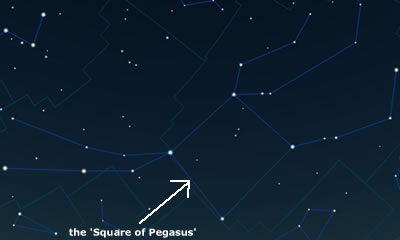Posts Tagged ‘constellation’
Orion Nebula, Sirius, Betelgeuse, Procyon and more
After several weeks of bad weather and tiredness due to busy work and a pregnant wife, I have been able to go out and view the Night Sky again.
A lot has changed since I last viewed the stars. Jupiter has now disappeared (from my viewing angle) and Orion has made its way along the night sky and is now settling in the South to South East area. The Plough has also come in to view and can be seen directly from my back garden towards the East.
The first thing I wanted to have a look at was the star Betelgeuse as Professor Brian Cox had said that it could turn into a Red Giant at any time. It would be amazing to see that happen in the sky and would be one of the highlights of my life. Unfortunately, the star was still looking the same through my binoculars and telescope, but I will keep checking it every clear night.
I also wanted to see if I could get a better view of the Orion Nebula which lies amidst the ‘Sword’ in the Orion Constellation. I had a look through my binoculars and telescope and could see a lot more than with the naked eye. What I could see was a blurry amount of light which is quite distinct compared with the rest of the space around it. It was exciting to be able to make this much out but I look forward to maybe getting a better look with a more powerful telescope when I can afford one. It was still a marvel to look at for me anyway.
Whilst I was looking at the Orion Nebula through the telescope, either a Satellite or a Meteor shot across the viewer. I’m not 100% sure what it was but it didn’t have any lights which can sometimes be seen on a satellite so I am leaning towards it being a meteor. It was so far away in the sky that it wouldn’t have been viewable by the naked eye. Perhaps someone can tell me what it was? I spotted it at about 8pm last night (24th March 2011).
There was one star in the sky that my wife and I always wondered what it was as it looked like a Helicopter or an Aeroplane suspended in the sky, with its lights flashing red and blue. After taking a closer look using our equipment and consulting the Internet, we found it to be Sirius (also known as the Dog Star and part of the constellation ‘Canis Major’). It is the brightest star in the sky and the red and blue twinkling that it gives off is due to its light hitting the atmosphere of the Earth and refracting in the gases. We are both glad that we now know what it is!
The final area of the Sky that I had wanted to take a look at was the bright star to the left of Orion. This star is called ‘Procyon’ and forms part of the constellation ‘Canis Minor’. This is also a very bright star, although obviously not as bright as Sirius. I couldn’t see much more detail through the telescope which was a shame, but at least I now know its name.
Pegasus, Jupiter and Polaris
I had to wait a whole week until the weather was good enough to go out and use the telescope again. This time I went out to try and see the brightest star in the sky, but I still didn’t know fully how to use the telescope so it was a bit hit and miss. I didn’t realise that I had to line up the viewfinder with the telescope beforehand, during daylight hours. So when it came to trying it in the dark, it was very difficult to find the correct direction. After several attempts, I finally locked on to the star but still couldn’t see it very well.
Having spent some time trying to view it through a telescope and binoculars, I decided to go and try and find out what it actually was. After searching through several sites, my wife found that the star was actually Jupiter and during the month of October, it was the brightest it will be for a long time (see link in the right hand side column). Whilst we were looking up about this, I learnt to find the ‘Square of Pegasus’ and where the North Star (Polaris) was in the sky. This was useful as Jupiter is situated just below the ‘square’ which made it easy to find. What made this extra relevant was that the ‘Square of Pegasus’ was right in front of us in the sky (North East) when we stood in our back yard. This made it really easy to pinpoint other stars, planets and constellations, and we think we pinpointed Neptune further to the East.
(image taken from ‘The Sky X First Light Edition’)
Armed with this new information we went outside to have another look but, unfortunately, it had started to cloud over so we were unable to use the telescope anymore. We did attempt to use the binoculars and thought we had zoomed straight in to Jupiter and saw a moon or two orbiting it, but we aren’t sure as the image kept changing. We think the binoculars are a bit dodgy (they were only very cheap!) so we can’t be 100% sure of what we saw. Will need to buy or borrow some binoculars to make sure.
So it wasn’t the best viewing but I did at least learn a lot of things about the Sky and its stars and constellations, and wherever I am now, I know how to find Jupiter as long as I can find the ‘Square of Pegasus’ first.
Time: 19:45 – 21:30, Longitude: 50.435423, Latitude: -4.093217, Viewing: North East



